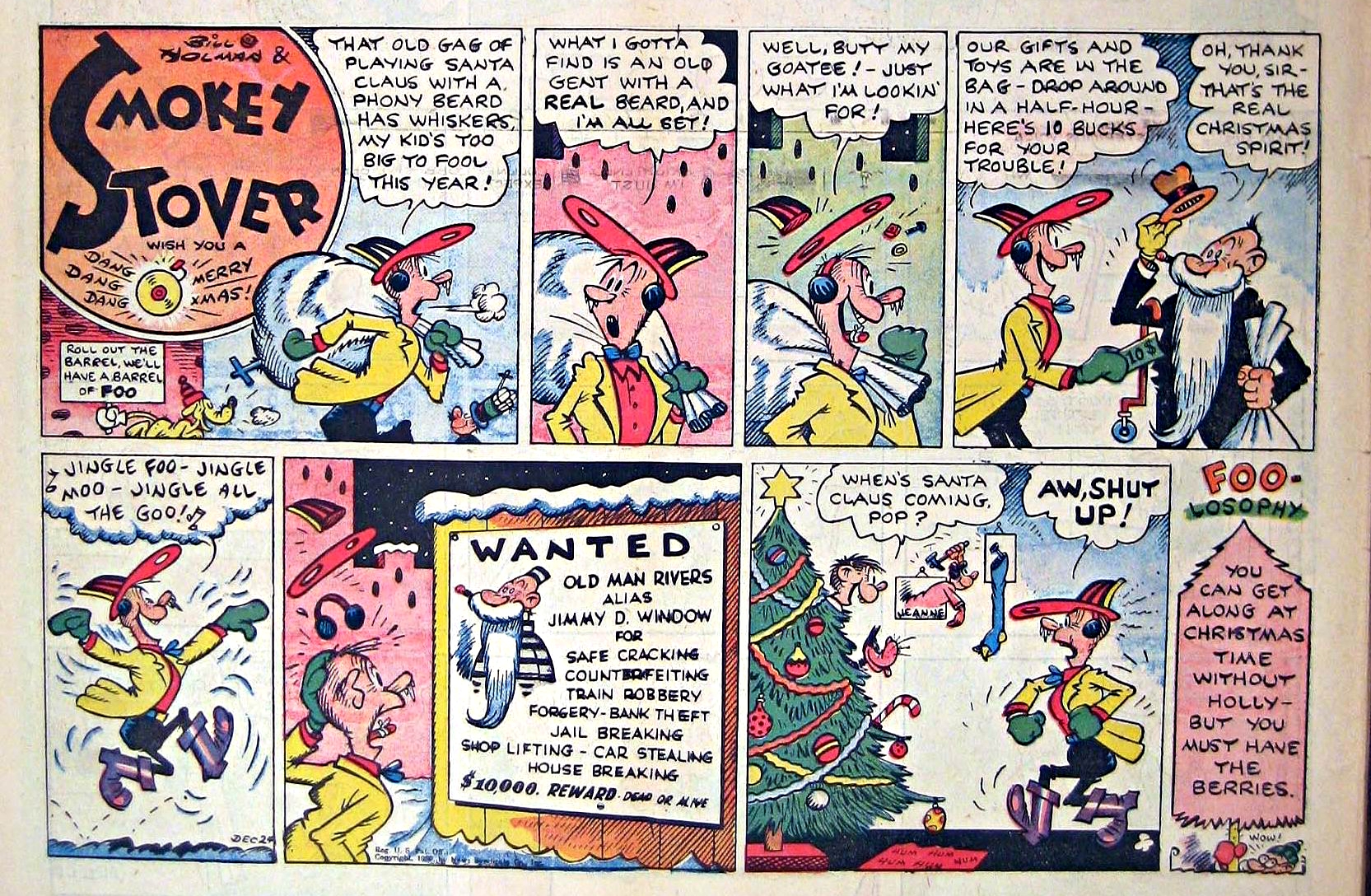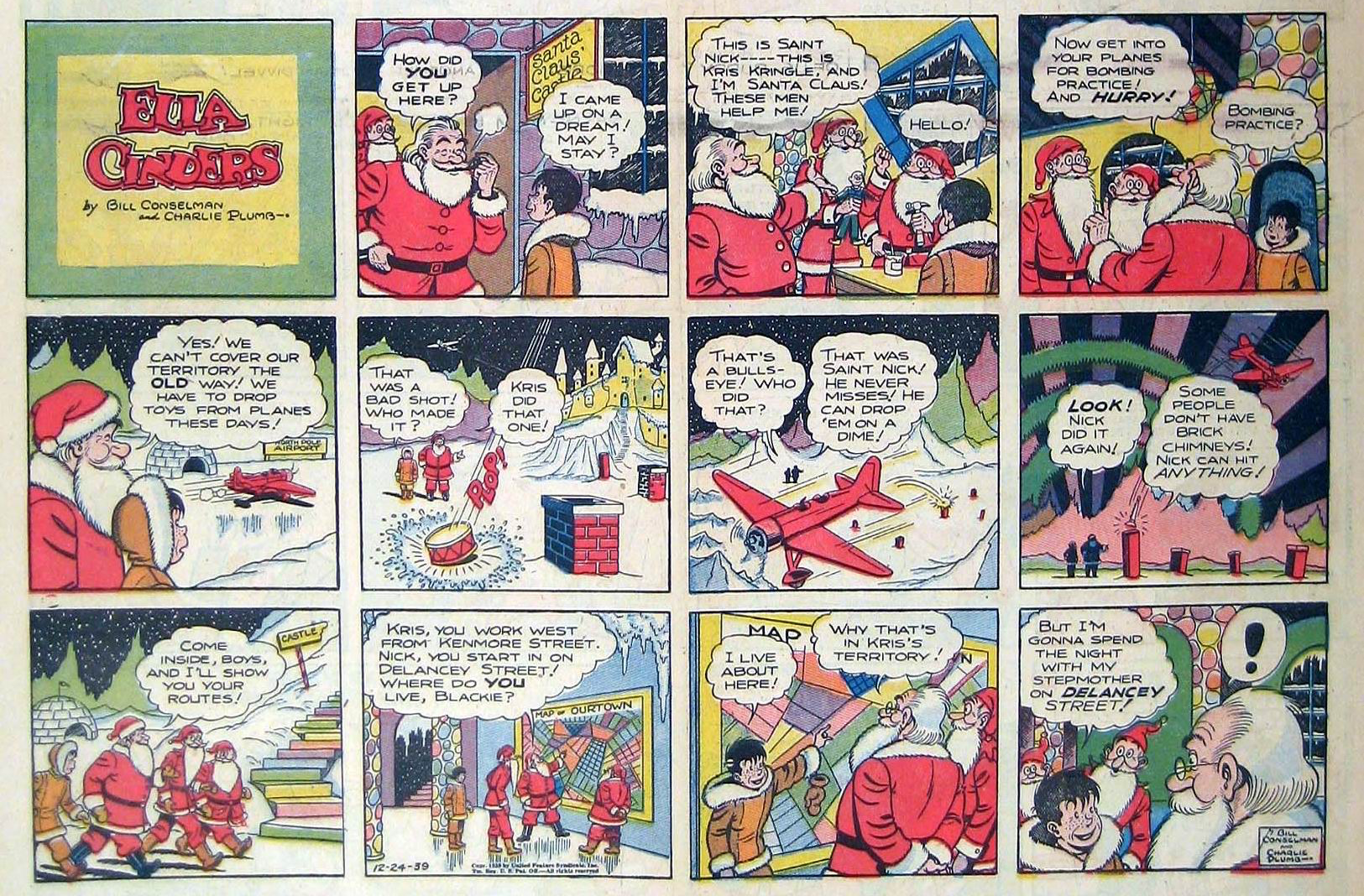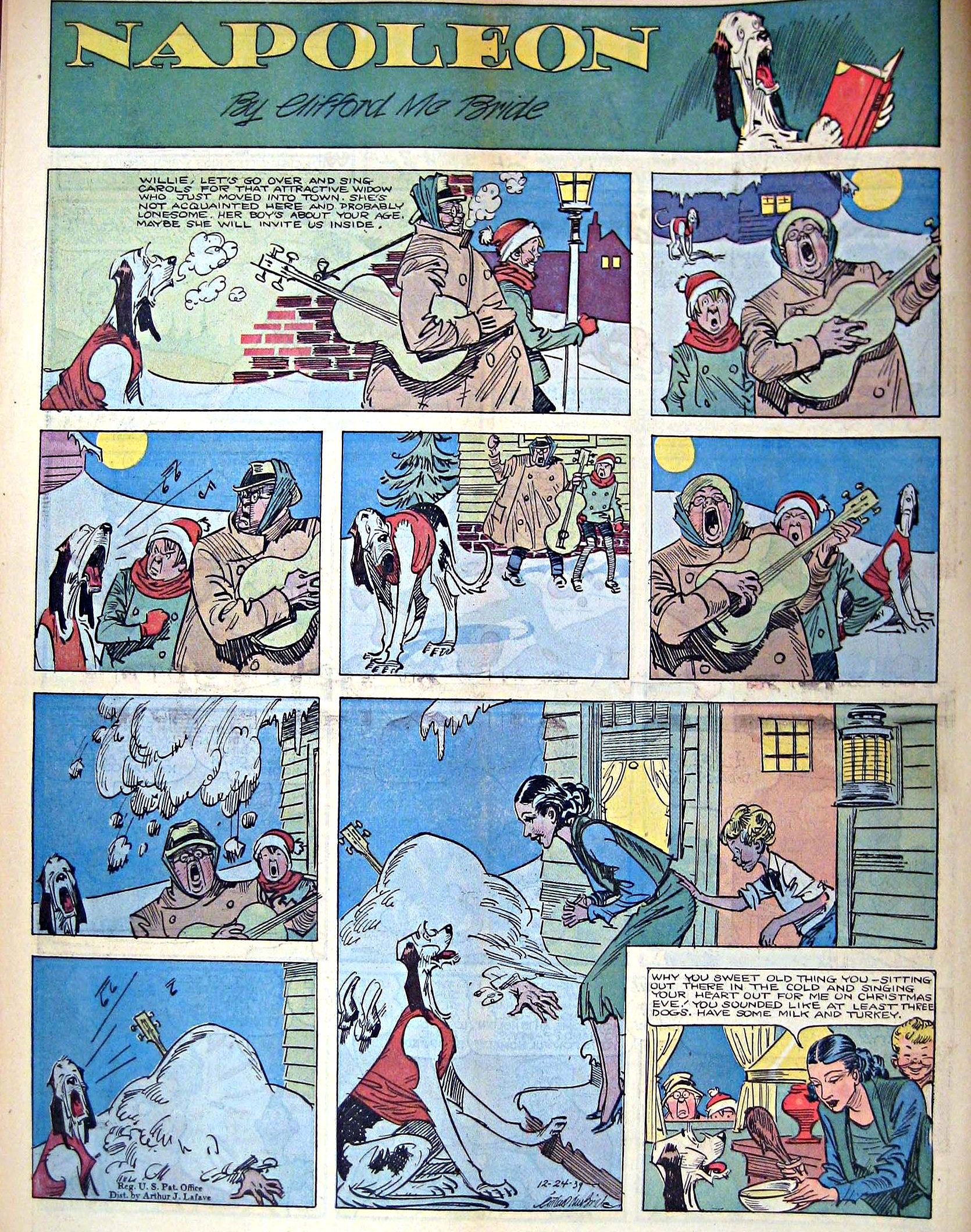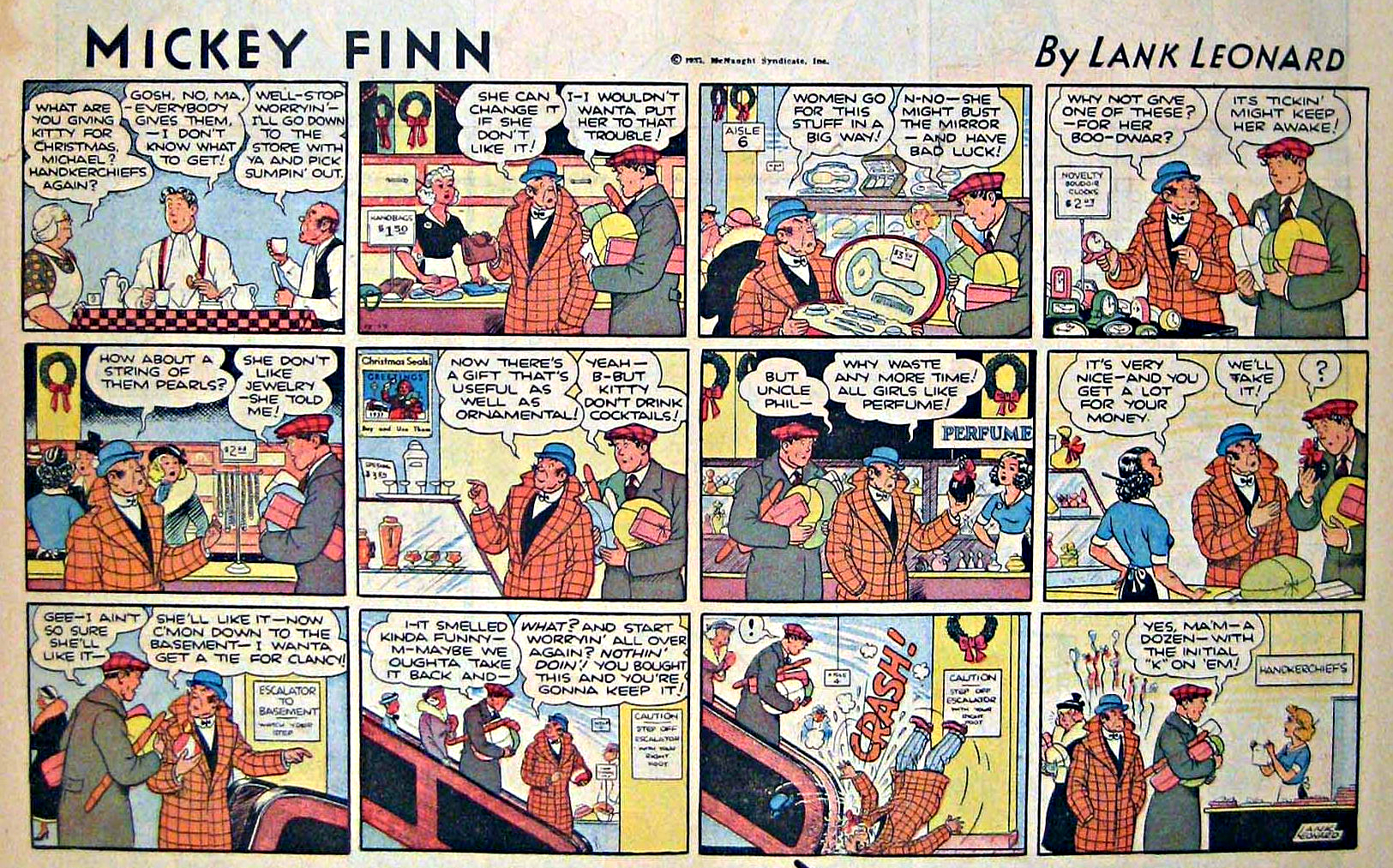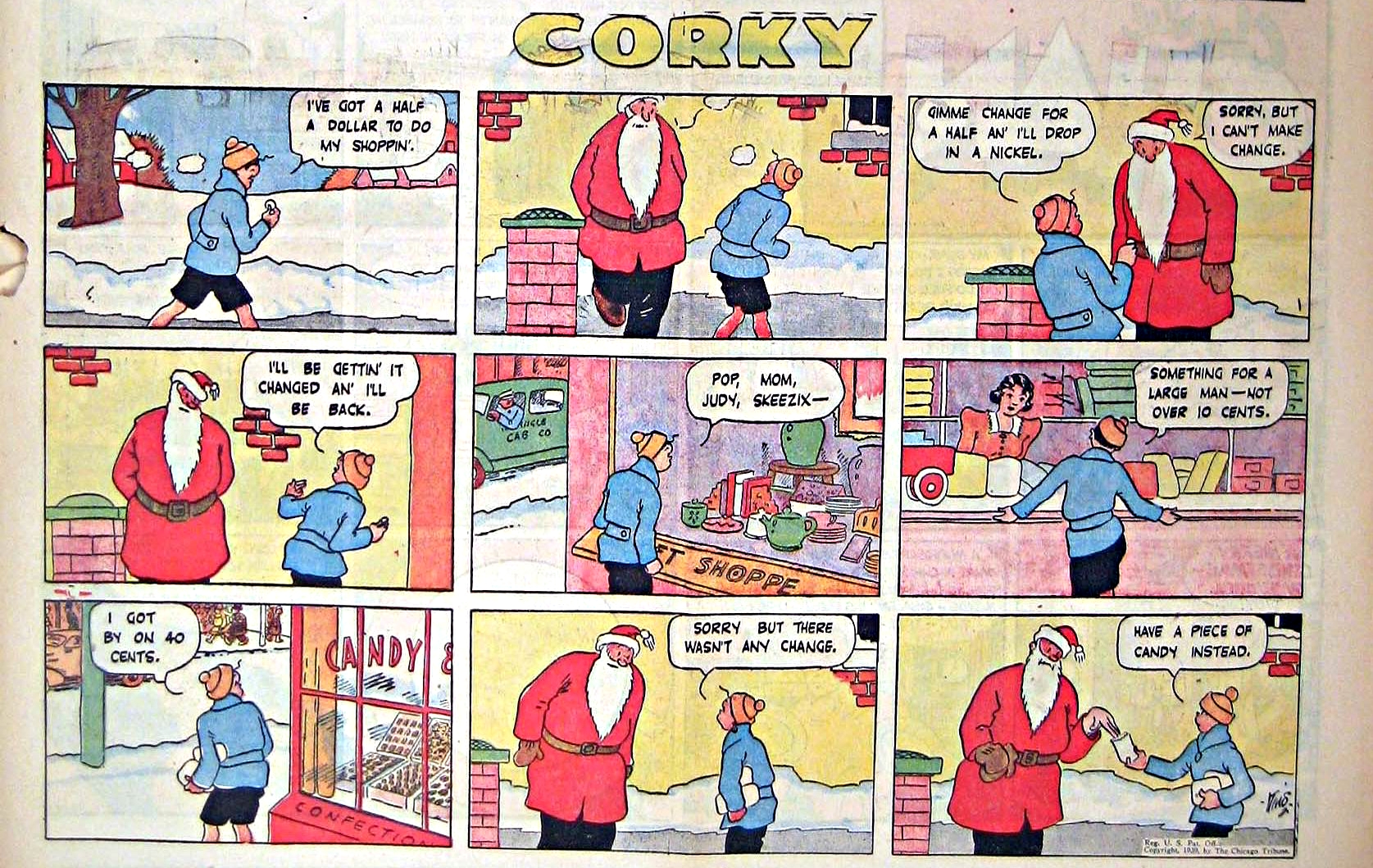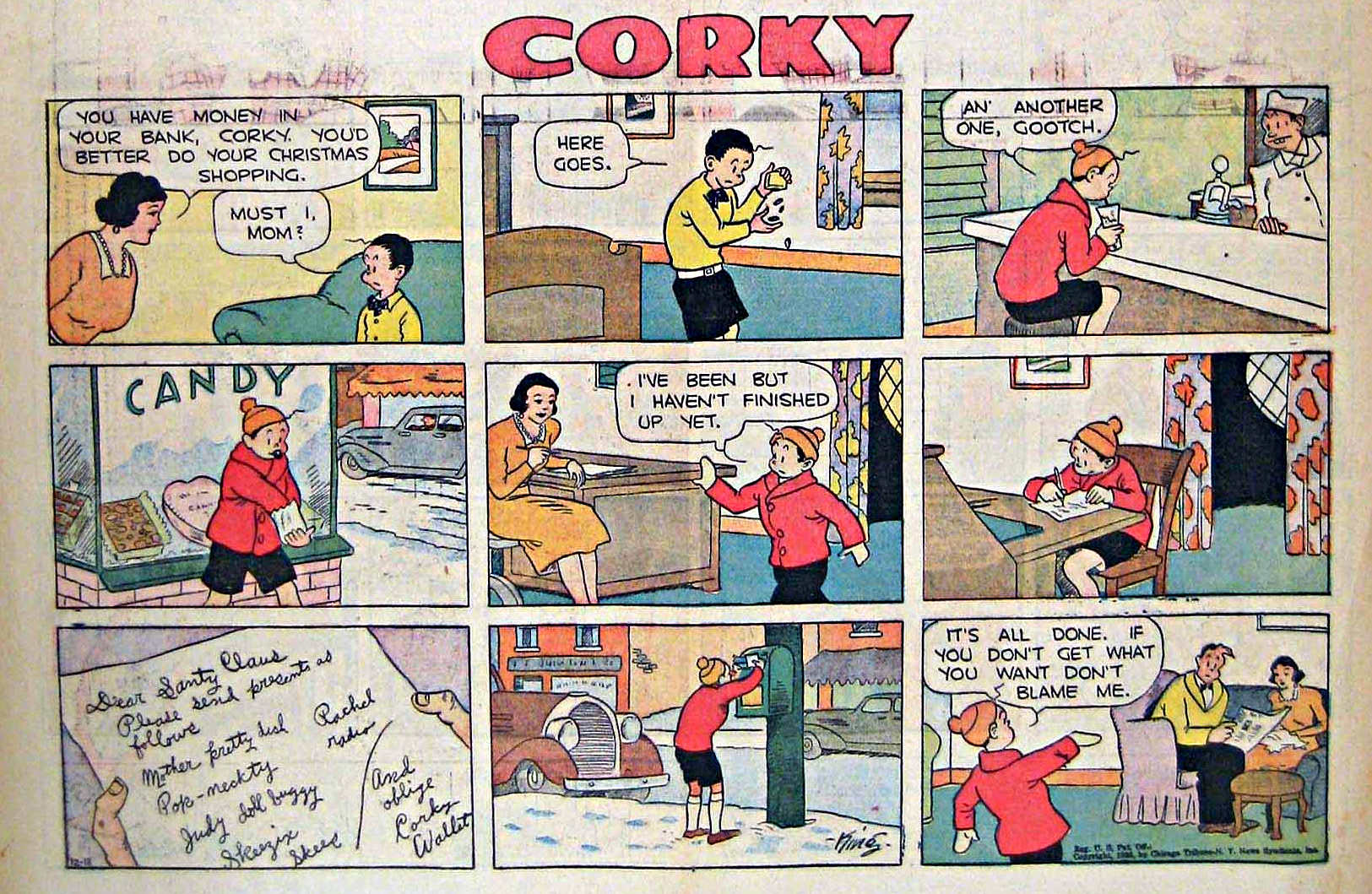Click the image to see a larger version.
As was seen previously, Dixie Dugan is very modern and not at all old fashioned, so she must keep up with the times and decorate in the most up to date way. Apparently in 1939 that meant having an outdoor Christmas tree. To me that sounds very old fashioned, but of course I'm from nearly 100 years in the future, so it's all relative.
I just really enjoy the overall construction of this strip, how there is a flurry of excitement at the beginning, but then as the novelty wears off they all realize, without having to say a word, that they really like the old fashioned way better. Good traditions just stand the test of time, I guess.

